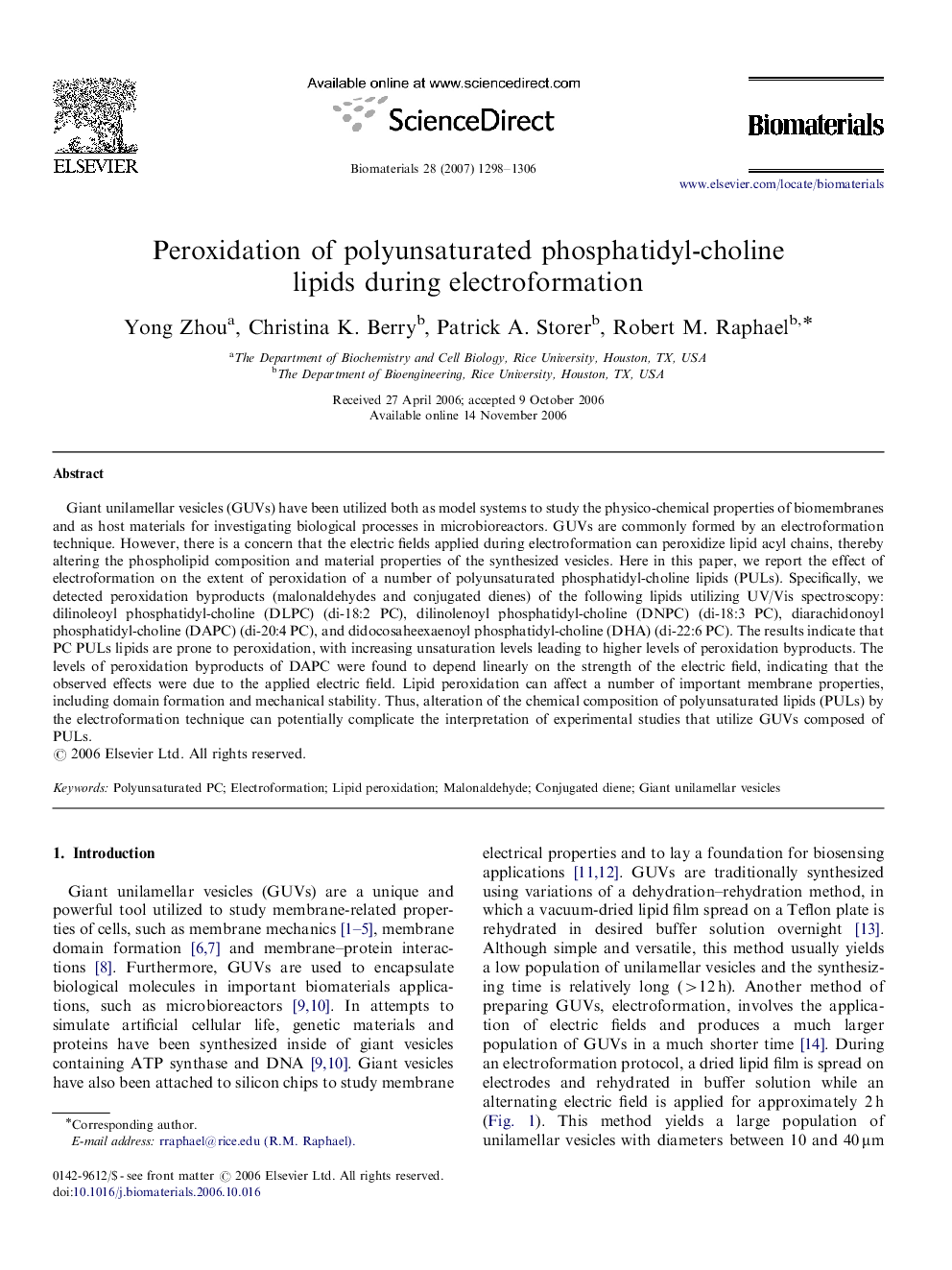| Article ID | Journal | Published Year | Pages | File Type |
|---|---|---|---|---|
| 10448 | Biomaterials | 2007 | 9 Pages |
Giant unilamellar vesicles (GUVs) have been utilized both as model systems to study the physico-chemical properties of biomembranes and as host materials for investigating biological processes in microbioreactors. GUVs are commonly formed by an electroformation technique. However, there is a concern that the electric fields applied during electroformation can peroxidize lipid acyl chains, thereby altering the phospholipid composition and material properties of the synthesized vesicles. Here in this paper, we report the effect of electroformation on the extent of peroxidation of a number of polyunsaturated phosphatidyl-choline lipids (PULs). Specifically, we detected peroxidation byproducts (malonaldehydes and conjugated dienes) of the following lipids utilizing UV/Vis spectroscopy: dilinoleoyl phosphatidyl-choline (DLPC) (di-18:2 PC), dilinolenoyl phosphatidyl-choline (DNPC) (di-18:3 PC), diarachidonoyl phosphatidyl-choline (DAPC) (di-20:4 PC), and didocosaheexaenoyl phosphatidyl-choline (DHA) (di-22:6 PC). The results indicate that PC PULs lipids are prone to peroxidation, with increasing unsaturation levels leading to higher levels of peroxidation byproducts. The levels of peroxidation byproducts of DAPC were found to depend linearly on the strength of the electric field, indicating that the observed effects were due to the applied electric field. Lipid peroxidation can affect a number of important membrane properties, including domain formation and mechanical stability. Thus, alteration of the chemical composition of polyunsaturated lipids (PULs) by the electroformation technique can potentially complicate the interpretation of experimental studies that utilize GUVs composed of PULs.
